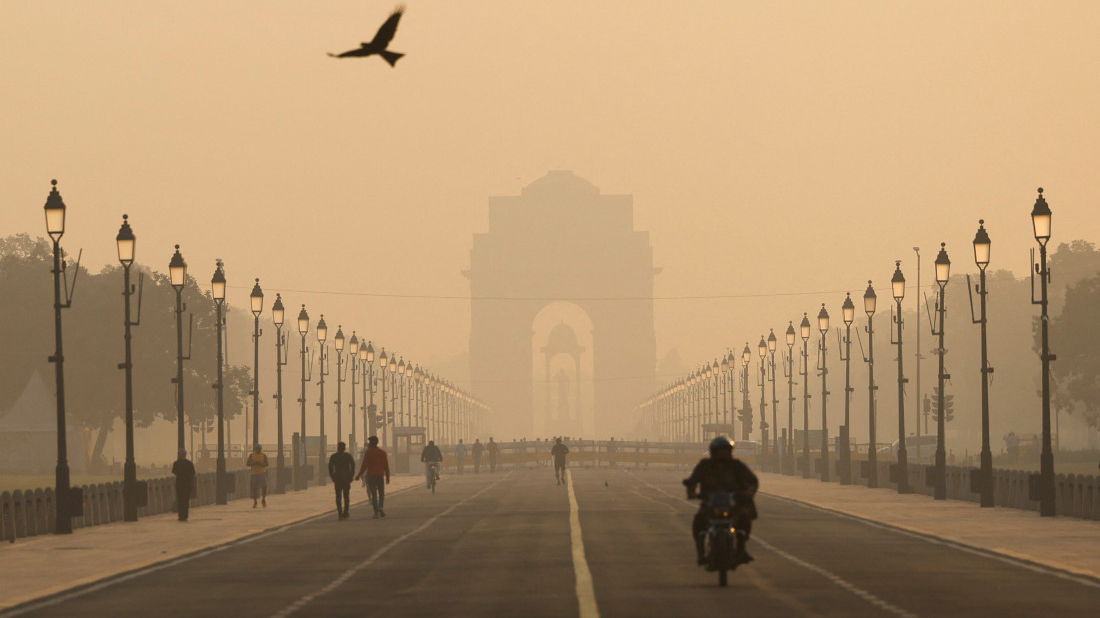First Azerbaijani fuel shipment reaches Armenia by rail, signalling new ties
Armenian Prime Minister Nikol Pashinyan announced the arrival of the first rail shipment of Azerbaijani petrol on Friday, calling the delivery — the...

New Delhi topped global pollution charts Friday as Diwali firecracker celebrations worsened air quality to hazardous levels, despite a ban. Seasonal crop burning further compounded the smog, leaving the city blanketed in thick, dense pollution.
New Delhi ranked as the world's most polluted city on Friday after Diwali celebrations involving firecrackers, despite a ban, pushed air quality to hazardous levels. Thick smog enveloped the city, obscuring landmarks like the presidential palace and nearby gardens frequented by joggers and cyclists following Thursday's festivities. According to Swiss firm IQ Air, Delhi's air quality index (AQI) hit 348, classifying pollution as hazardous and placing the city at the top of a real-time global pollution ranking.
Although local authorities have banned firecrackers during Diwali and the winter months for several years, in line with Supreme Court orders, enforcing the ban remains challenging, despite penalties. Some Hindu groups argue the ban infringes on festival observance, while the Delhi government maintains it is intended to protect public health. Friday’s smog was further intensified by seasonal crop residue burning in northern India, which worsens air quality each winter as colder air traps pollutants from various sources.
Ukraine has welcomed the European Union’s decision to provide €90 billion in support over the next two years, calling it a vital lifeline even as the bloc failed to reach agreement on using frozen Russian assets to finance the aid.
Belarusian President Alexander Lukashenko has confirmed that Russian-made Oreshnik missile systems have been deployed on Belarusian territory and placed on combat alert.
The European Union has postponed signing its long-awaited free trade agreement with the Mercosur bloc until January, after failing to secure sufficient backing from member states, according to media reports.
Thousands of Bulgarians took to the streets on Thursday evening to protest against the outgoing government, demanding fair elections and judicial reforms to address what they describe as widespread corruption.
Ukrainian President Volodymyr Zelenskyy arrived in Poland on Thursday following a summit of the European Council in Brussels.
Dense smog has forced authorities in Pakistan’s Punjab province to shut several major motorways on Tuesday (16 December), stranding commuters as visibility dropped sharply and Lahore’s air quality reached hazardous levels.
At least 37 people have been killed in flash floods triggered by torrential rain in Morocco's Atlantic coastal province of Safi, Moroccan authorities said on Monday (15 December).
Climatologists say Poland has logged its warmest December in 74 years, with 2025 continuing a run of above-average temperatures and repeated national records.
As the world marks the tenth anniversary of the Paris Agreement, progress in combating global climate change is mixed.
An extratropical cyclone has caused widespread disruption across Brazil’s São Paulo state, with powerful winds toppling trees and power lines, blocking streets and leaving large parts of the region without electricity.
You can download the AnewZ application from Play Store and the App Store.

What is your opinion on this topic?
Leave the first comment